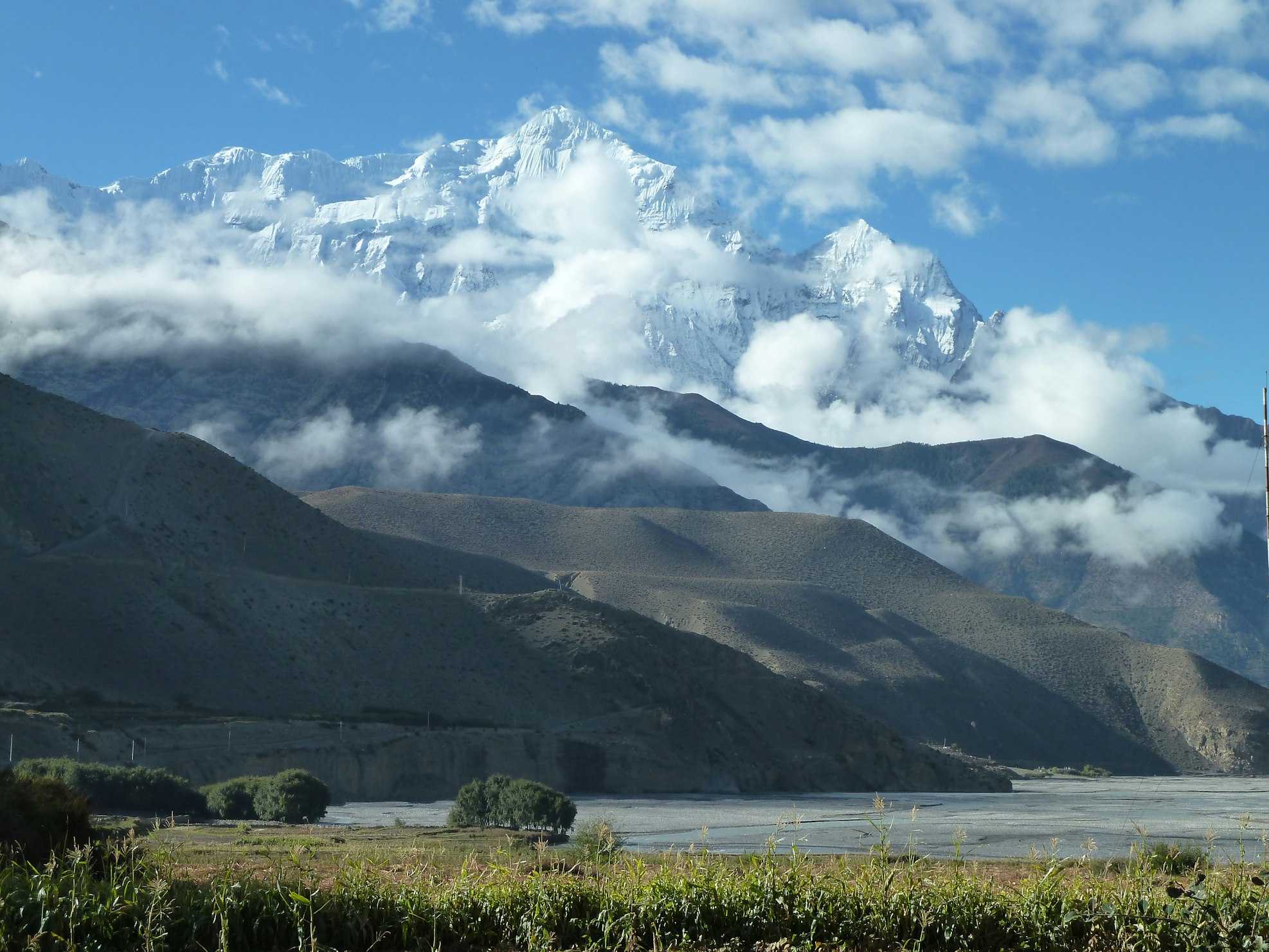


Geographical Background:Mustang is situated beyond the two mighty Himalayan ranges namely Annapurna and Dhaulagiri at the upper reaches of Kali Gandaki River. With the population of over 5000 people distributed in over 30 villages located along the riverbanks it stretches 2350 sq. km. in size with altitude ranging from 3000m to 6000m. The tipical features of this are the high winds that blow daily from around 10 am until sunset and being essentially in the trans-himalayan range there is very little rain which mostly falls durring summer months.
Historical Background:The history of Mustang dates to the 8th century during the reign of the powerful and religious King Trison Detsen of Tibet. During this period the Buddhist doctrine was spread and according to the “Molla” a local historical document which traces the lineage of the kings of Mustang, relates the advent od Buddhism and the subsequent historical developements of Mustang, a much later descendent of Trisong Detsen migrated to Mustang and lived there. One of his son, Mae Pal, rose to be a powerful; lord and defeated the local chieftains in the Dozens(castle) that dominated Mustang. Even today, the ruins of ketcher Dzong (which belongs to Ame Pal) can be seen on the ridge overlooking Lo Manthang. Ame Pal later built the wall city of Lo Manthang as his capital ofter he had conqured the forts in his region and unified the country in the middle of the 15-century.
Throughout the sixteen to the eighteen centuries Mustang had difficult relations with the kings of Jumla to which it eventually succunbed in the mid-eighteen century as a result of which it had to pay an annual tribute. But after King Prithivi Narayan Shaha of Gorkha conquered Jumla, the tribute was transferred to the Gorkha Kings and thus became a subject of Nepal. The kingdom of Mustang was formally annexed to the unified modern state of Nepal in 1946.
Culture And Religion:The culture and religion reflects the strong affinity of Mustang with Tibet with its landscape, language, the people, monasteries, ruined forts, and the stark Tibetian plateau-like region. The main religion practised in the region is Buddhism. Except for a few of the Nyingma and Kargyupa sect, the monasteries are the entire Sakya (Ngorpa) sect.
The people of this region has three basic seasonal activities like in the spring they plough and sow the fields, in the summer they live in tents in the high grazing grounds of their goaths, mules and horses and in winter when it is too cold they go on trading trips to Kathmandu, India and some far as up to the cities of Bangkok, Singapore and Hong Kong.The community as it used to be in Tibet, based on a feudal system with grading ranging from the kings and nobility to the lower calsses such as the blacksmiths and the butchers. The family is closely knit and polyandry is practised.
Although no proper study on the wildlife has been made in the region however, abundance of wildlife is found in the higher reaches in the Damodar Kund area at the base of the Damodar Himal, which is considered a sacred place for both Hindus and Buddhist alike. Generally birds like lark, finch, raven, the bearded vulture and the Himalayan griffin vulture can b seen and animals like Blue sheeps, Marco Polo sheep (Argali), Himalayan wolf and the rare and exclusive snow leopard are found in the Damodar Hund region
There are no reviews yet. Be the first one to write one.